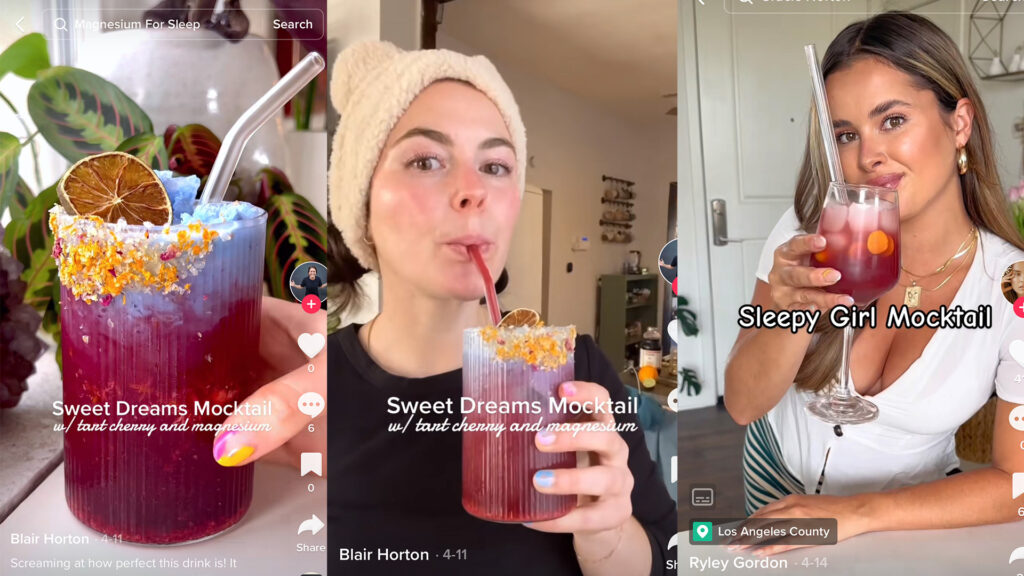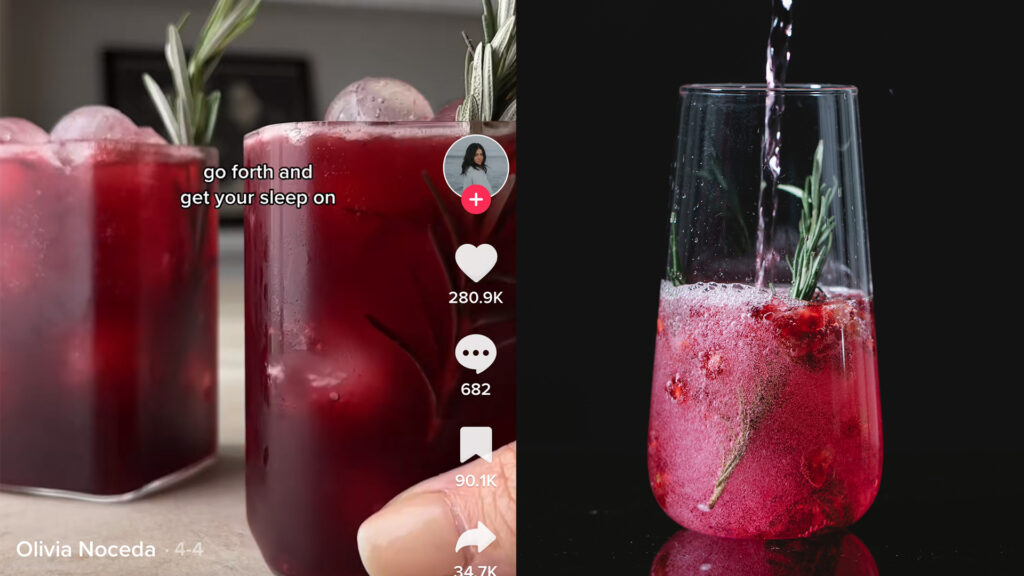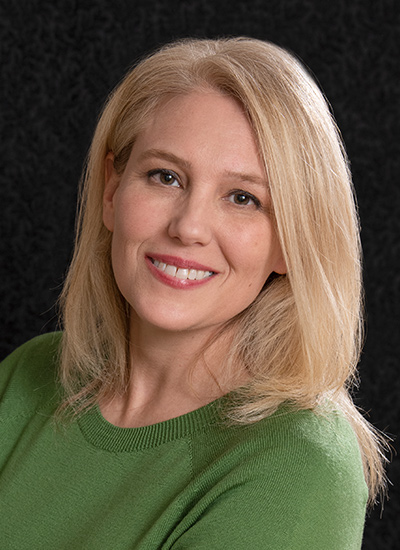I may be a reckless human, but I’m always down to experiment on myself, especially where the possibility of good slumber is concerned. When I heard about the “sleepy girl mocktail,” a drink making the rounds on TikTok that purports to increase both the amount and quality of one’s sleep, I figured it would be perfect to sample. I tried it at night and also, just for kicks, during the daytime — on a day when I had to drive around LA to run a bunch of errands.

What Is a “Sleepy Girl Mocktail”?
A “sleepy girl mocktail” is a beverage that several wellness influencers on TikTok report has helped them get quality sleep. The earliest reference I could find to the drink was a video dating from January 2023, when creator Calee Shea posted a recipe calling for tart cherry juice and prebiotic soda. Later, TikTokers such as Gracie Norton added magnesium powder for an extra soporific boost.
How Is It Supposed to Work?
Proponents of the drink state that tart cherry juice is linked to better sleep since it contains the amino acid tryptophan as well as the sleep-regulating hormone melatonin. In addition, magnesium is a mineral required for many cellular processes, including regulating neurotransmitters that are involved in sleep, and as many as half of all Americans may be deficient in it.
What Do Experts Have to Say About the Ingredients?
I spoke with Anne Cording, a Registered Dietitian Nutritionist (RDN), to get the skinny on the ingredients that make up the mocktail. “Tart cherry juice is interesting,” she observed. “Some research suggests that it may not be just one or two components—the melatonin or the tryptophan—but several components working together to help improve insomnia.” As an example, she cited procyanidin, a flavenoid found in many fruits, including tart cherries, as a “cooperative component in improving insomnia” because it appears to increase tryptophan availability. Tryptophan, in turn, “is a precursor of serotonin, which is calming and improves sleep.”
In addition, tart cherry juice contains melatonin. Cording explained that melatonin increases as the day gets darker, helping to bring on sleep, and, conversely, decreases with light, helping us to wake up. “The body should produce enough melatonin to induce sleep,” she said, but in cases where people have trouble falling asleep anyway, “some research suggests that exogenous melatonins, such as supplements and natural sources like tart cherries, can be used to improve sleep and are safe for short-term use.”
But how does a substance produced in a cherry tree work inside the human body? To make sense of this, I asked Daniel Martin, a professor of anesthesia at the University of Plymouth (U.K.), who knows a little something about putting people to sleep safely. “Melatonin is a truly fascinating molecule that is thought to have been present in some of the first life forms on Earth and is found in most life forms alive today,” he said.
“Originally (a few billion years ago) it acted as an antioxidant in basic single-celled organisms, and its more complex role in humans must have developed later. Like other nutrients in plants, such as vitamins, we can take advantage of them by eating the plant. Melatonin probably doesn’t act as a hormone within the plant in the way we usually think of hormones acting, but once we have ingested it, our receptors for melatonin transform its simple role in plants into its more familiar role we understand in humans.”
Daniel Martin, to Sleepopolis

Amounts of Active Ingredients
I was skeptical that one mere cup of cherry juice would furnish enough active ingredients to actually affect my sleep. Martin concurred, saying, “unfortunately, there is unlikely to be enough of these molecules to have the effect we are hoping for. Most of the studies of melatonin use doses measured in milligrams, but the mocktail is only likely to contain micrograms; similarly for tryptophan, studies have looked at doses in grams, but your pre-bed tart cherry hit contains just milligrams, I’m afraid. Whilst those additional molecules are definitely there and will almost certainly be measurable in the blood when you to go looking for them, it is unlikely that they will have a demonstrable effect in most people.”
However, he said, the mocktail may still prove effective due to the placebo effect. Cording was more optimistic about the possible efficacy of the drink, pointing out that “procyanidin B-2 seems to boost the ability of tryptophan to work, and even small increases of exogenous melatonin seem to improve sleep. Sensitivity to supplements and medications varies from individual to individual, so [the mocktail] may be more effective for some and less effective for others.”
Is It Safe?
I asked both experts whether they thought this drink was safe to consume. Martin vouched for the safety of the ingredients, noting that cherry juice would be a far better option than alcohol or caffeine in the evening. Cording sounded a word of caution, however, recommending that people “be very careful in choosing ingredients — magnesium oxide can cause diarrhea, as can tart cherries. It could make for an ugly night.” Moreover, she observed that “there isn’t enough reliable info regarding intakes of tart cherry juice for pregnant or chest/breastfeeding people,” so she recommends limiting consumption to only one cup of tart cherry juice per day for anyone who is pregnant or nursing an infant.
I Tried This Mocktail Both During the Day and at Night. Here’s How It Went.
In case the drink knocked me out cold, I decided to try the mocktail on a Friday night. That way, I could sleep in on Saturday morning if I had to. My beverage ingredients included Lakewood organic pure tart cherry juice, Calm brand raspberry-lemon flavor magnesium carbonate powder, and Poppi strawberry-lemon prebiotic soda. I poured about a cup of the cherry juice into a pint glass with ice, topped the glass off with about four ounces of the soda to reach the rim, and mixed in two teaspoons of the magnesium powder, which made the mixture a little cloudy. I tasted it: pleasant, tart, lemony, and slightly fizzy. Pretty good! I gulped the entire glass down in about ten minutes.
Once I had finished the drink, I was crestfallen to realize that my two-buck can of fancy prebiotic soda remained ¾ full and was rapidly losing carbonation. I hate wasting expensive groceries, so I guzzled the remainder of the can, too, before brushing my teeth and heading to bed. I fell asleep in no time, but a need to urinate woke me up around 3 a.m. Evidently, my bladder capacity comes to less than 24 ounces. I got up, unleashed the contents of my bladder into the toilet, and got back in bed, where I fell asleep again easily enough. Unfortunately, the act of getting up and peeing prevented me from getting the nine hours of uninterrupted shuteye that I had hoped for.
Undaunted, I tried the mocktail again in a few days, on a morning when I was particularly well rested. If the mocktail really helped make people feel sleepy, I reasoned, the perfect time to test it out would be soon after I woke up. I poured and drank the beverage, making sure to use the bathroom before I left the house. I didn’t feel drowsy at all that day, but I was in a particularly good mood. All in all, the drink tasted good and left me smiling, so I will probably drink this beverage again, even if I remain skeptical of its effectiveness in inducing sleep.
Sources
Cording, Anne. Personal author interview. May 2024.
Martin, Daniel. Personal author interview. May 2024.



























